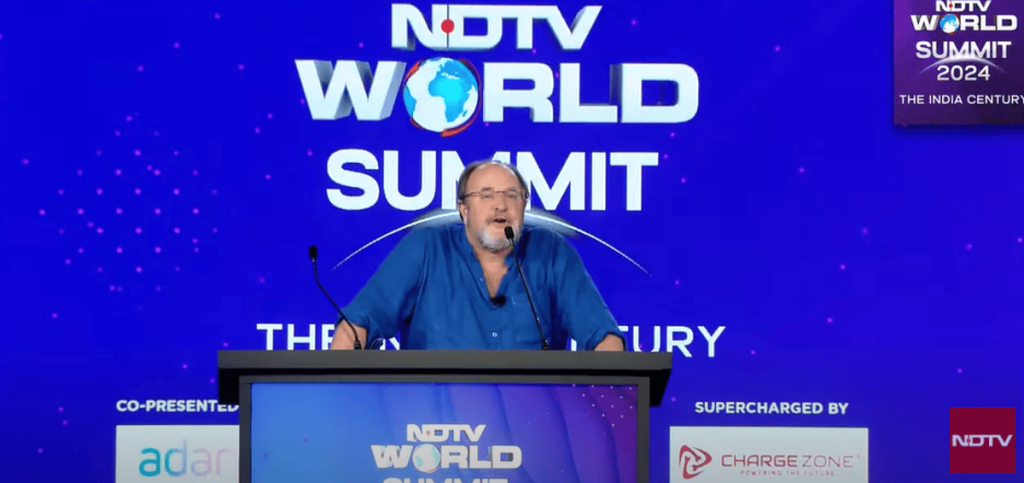He stated that the nation’s most successful export was the spread of Buddhism, while drawing attention to the Anuradhapura stupas that was constructed by Prince Mahinda, son of King Ashoka.
The presenter of many BBC shows also detailed how Buddhism spread from India to Myanmar, Thailand, Malaysia, and Indonesia.
“By 100 AD, India is locked with Rome in a very regular trading relationship. Pliny (ancient Roman historain) talks about the astonishing drain of gold from Roman pockets into those of India,” the art historian said.
He said that the Romans knew every port on the west coast of India and they particularly focussed on Kerala and Gujarat, which were then known as Muziris and Barigaza, respectively.
To prove the point, he showed the Muziris Papyrus artefact, which was a shipping invoice signed by a merchant and a financier from Alexandria in Egypt, and a description of the cargo on a ship called Hermapollon that had sailed back from Muziris.
Referring to the invoice, he said that the Indian trader was going to send 10 tonnes of ivory, pepper, spices and a thing called naad, which is used for making perfumes.
According to the historian, ivory was the most lucrative export from India to Rome, as was malabathrum (used in cooking and medicine).
He said that scholars now believe that “one-third of the Roman Imperial budget” was spent on customs when the goods from India entered Berenice shipping port in those times.
Dalrymple said that the Romans considered these to be expensive luxury items and “the Romans couldn’t get enough of these Indian products.”.
Conversely, he also spoke about Egyptian glass beakers found in Kabul, brought by a Roman Egyptian ship to the mouth of the Indus River, “punted up the Indus and the Kabul river.”.
He asserted that India was not in any way peripheral to the main trade networks in ancient Asia but was at the heart of all trade networks.
